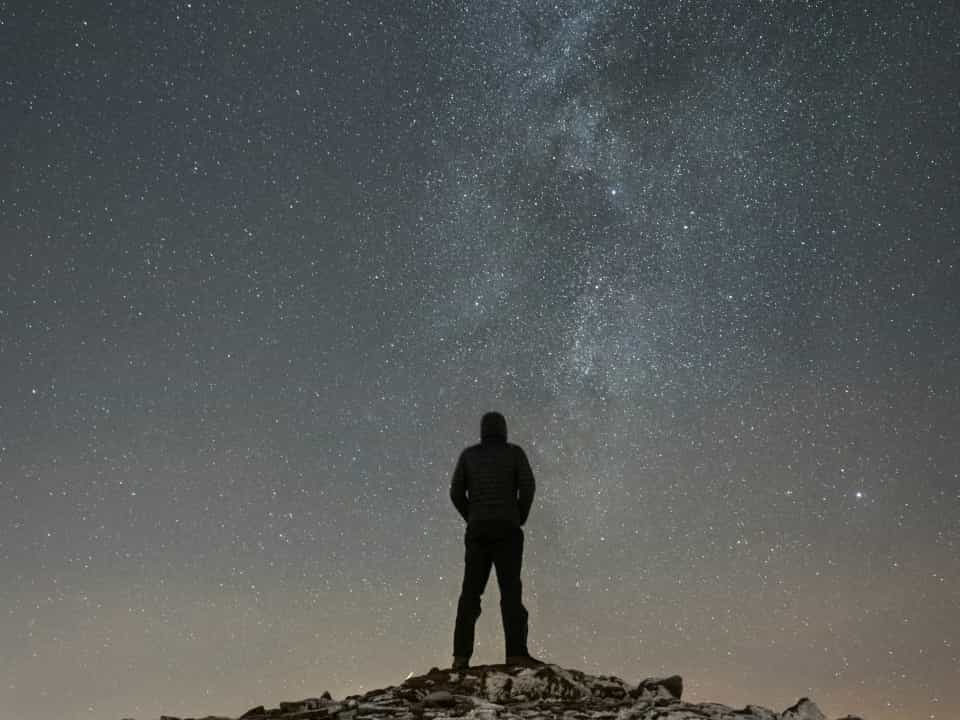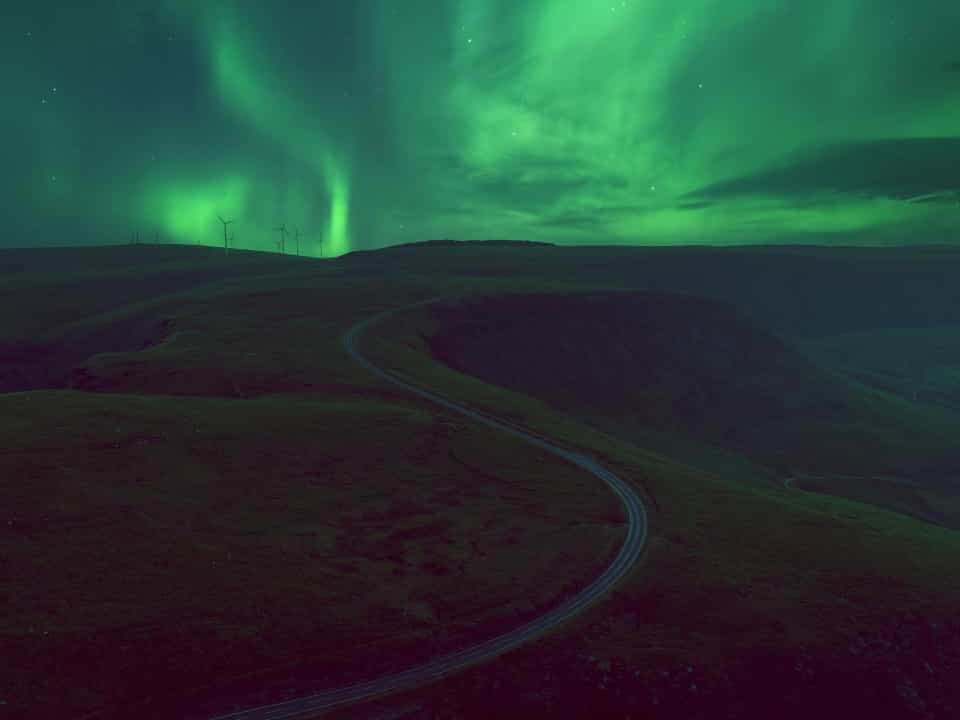Brecon Beacons Stargazing

The UK is home to seven of the world's 21 Dark Sky Reserves. Chief among these is Bannau Brycheiniog (formerly the Brecon Beacons) National Park, the first International Dark Sky Reserve in Wales. The park gained this accolade thanks to its lack of light pollution, and it’s an amazing destination for nights cuddled up together under the sparkling stars or inspiring your kids to learn more about the universe around them.
We’ve devised the ultimate guide to star-spotting in the park, listing the best places with clear skies, things to look out for and tips for novice stargazers, so grab your binoculars and get out there under the pristine Welsh night sky.
Why stargaze in the Brecon Beacons?
Thanks to the lack of light pollution, the national park has some of the darkest dark skies in the UK, making it a wonderful destination for stargazers to visit.
What will you see most nights in the park’s night sky?
On a clear night, you can see the billions of stars that form our galaxy, the Milky Way, glittering in a shimmering band across the sky. Here’s what else to expect.
-
The Moon – if it’s bright, it can detract from the experience.
-
The North Star and Sirius (the brightest star of all).
-
Prominent constellations like The Plough (the ‘handle’ of which points to the North Star), the three bright stars of Orion’s Belt and ‘W’-shaped Cassiopeia.
-
At various times of year, you can see the planets Mercury (hard to spot as it’s close to the horizon), Venus (gleaming white), Mars (rusty coloured), Jupiter and Saturn (both a yellowish tan). Planets are easy to identify as they don’t ‘twinkle’ like stars do.
-
The International Space Station, which orbits the earth in an easterly direction once every 90 minutes. You’ll see it as a steadily moving white dot.
Celestial events to put in the diary
Not all astronomical events occur all year around. A little forward planning may see you lucky enough to witness the following phenomena. You don’t need any special gear, but binoculars or a telescope will magnify your experience.
-
Shooting stars and meteor showers are best seen in August, October – when the Draconid meteor shower is active – November and January.
-
The shape-shifting multicoloured lights of the Aurora Borealis (Northern Lights) put in occasional winter appearances in the park.
Top stargazing locations in Bannau Brycheiniog

For superb stargazing, you need the skies to be cloudless, almost moonless and well away from any light pollution. There are 10 official spots for stargazing in the national park, but the following three Dark Sky Discovery Sites come out on top among Pitchup’s amateur astronomers.
Bannau Brycheiniog National Park Visitor Centre
Known to aficionados simply as the Mountain Centre, the park’s main hub is one of the most accessible stargazing spots in the national park, just off the A470 near Libanus and within easy reach of Brecon (15 minutes’ drive). Stargazing events led by expert astronomers are held here regularly between September and April, which is peak viewing time. People do live locally, so always use the official pay-and-display car park and minimise any noise after dark.
Hay Bluff
With peerless views over the Wye Valley, Powys and Shropshire by day, Hay Bluff is one of the highest peaks in the Black Mountains and by night offers unparalleled access to the heavens from the flat summit of its lofty perch. The car park is just off Gospel Pass, a largely single-track road – the highest in Wales – that runs between Hay-on-Wye and Abergavenny.
Usk Reservoir
Tucked into the Usk Valley well away from any light interference, the reservoir is easily accessible from Trecastle and the A40 (both 15 minutes’ drive). There is ample flat space in the car park for setting up telescopes, and the wide-open skies over the water lend themselves to stargazing. You can also walk out along the dam for even more impressive viewing.
Stargazing tips for beginners
One of the many benefits of Dark Sky Reserves is that they enable visitors to see the stars with the naked eye; there’s no need to rush off buying expensive equipment like telescopes and binoculars when you stargaze in the Brecon Beacons, although they will add to your experience.
Useful apps for stargazing
Hold the universe in your pocket. These websites and smartphone apps will help you identify stars, planets and constellations in the night sky.
-
Night Sky is a useful guide with 3D maps of the heavens
-
Sky Tonight will help you identify what you see in the sky
-
Star Walk 2 is great for helping you identify constellations and getting your bearings
-
The website Time and Date gives details of what to see nightly in the park
-
My Aurora Forecast and AuroraWatch UK send out alerts if seeing the Northern Lights is a possibility
-
Track the International Space Station with alerts from NASA

Pitchup’s eight top tips for successful stargazing
You won’t need any specialist gear, but please bear the following in mind.
-
Moonless nights or the darker nights of autumn and winter are top star-spotting times
-
Night-time temperatures in the Brecon Beacons can get chilly even in the summer, so bring several layers of clothing, hats and gloves to keep warm after dark
-
Let your eyes get accustomed to the dark (it takes about half an hour) to experience the night sky at its best
-
Avoid light pollution by using a red bike light or a red-light torch (or paint the face of your torch with red nail varnish)
-
If you use your phone for vision, change the display to a night-time setting
-
Take a compass (or use your smartphone apps) so you know where to search for constellations or planets in the sky
-
Although you’ll see plenty with the naked eye, a cheap pair of binoculars will augment your view
-
Take blankets, food and drink to stay comfortable under the star-filled skies
Why conserving the Brecon Beacons night sky is important
It’s vital to reduce light pollution, as interference from light has a colossal impact – both on us (by disrupting our sleep patterns) and on the climate (by increasing the carbon dioxide in the atmosphere). The prestigious status of International Dark Sky Reserve will help the national park promote and preserve its dark skies for future generations. You too can do your part when stargazing by only visiting official Dark Sky Discovery Sites – including the ones mentioned above – and using red-light torches or phones on night-time settings. If you choose to glamp in a geodesic dome with a bay window, you might even catch the astral displays from your bed.
And of course, pitch-black nights are crucial for nocturnal creatures, who depend on the natural rhythm of darkness to forage or hunt for food, migrate and reproduce. You only need to visit Llangorse Lake – another official stargazing spot – at twilight to see swans swooping over the water as they feed. Later you’ll hear owls calling and bats squeaking in the darkness. Badgers, foxes and hedgehogs also come out to feed at night; stay overnight in the Brecon Beacons and you’ll soon realise that life in the natural world goes on after dark, thanks to that lack of light pollution.
Time to get planning
We’ve given you all the information required to plan your stargazing trip to the Brecon Beacons, so now it’s time to have a look at some of Pitchup’s accommodation options within the park. Book your camping trip ahead of time if you’re thinking of attending the annual Welsh Dark Skies Week or the park’s Dark Skies Festival (usually in September), and keep up to date with the latest dark skies news from the park.